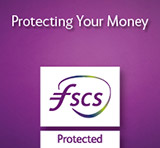Do all providers offer flexible ISAs?
Providing flexible ISAs is optional for providers, and so be sure to check whether or not your chosen provider offers this before opening an account – as remember, you can only open and subscribe to one Cash ISA each tax year.
Are all ISAs flexible?
Not all ISAs are flexible, however here at Virgin Money our Easy Access Cash ISAs are fully flexible. This means you have the freedom to make deposits and withdrawals as often as you like as long your total deposits don’t exceed the ISA allowance for that tax year.
Remember, any money you put back in must be in the same tax year it was taken out. You can only replace prior years' subscriptions into the same ISA with your original ISA provider. If you close or transfer your ISA you will lose the ability to replace prior years' subscriptions after transfer.
What if I make a withdrawal from a non-flexible ISA?
The replacement of any money withdrawn from a non-flexible ISA will count as an ISA subscription towards your ISA allowance. If you are unsure whether your ISA is flexible, check with us before you make a withdrawal.
Who keeps track of my ISA allowance and what I have subscribed?
It is still your responsibility to keep track of how much of your ISA allowance you have used and now you will need to take into account any withdrawals that you have made from a flexible ISA.
You can ask your ISA provider(s) to confirm what your remaining ISA allowance is with them at any time. But remember your ISA provider will not know about any money you have paid into any other ISA.
What can I withdraw?
All flexible withdrawals have to be made in cash, so if you have a Stocks & Shares ISA or an Innovative Finance ISA you might need to sell investments to raise money before you withdraw it.
Any fees that are charged to your ISA do not count as a flexible withdrawal, nor do transfers to another ISA or any money removed at the request of HM Revenue & Customs.
For more details of withdrawals that do not count as flexible withdrawals you will need to check your flexible ISA terms and conditions.
What happens if I transfer my flexible ISA?
If you want to transfer money you’ve paid into a flexible ISA in the current tax year you must transfer all of it. For previous years, you can choose to transfer all or part of your savings. You will need to contact the ISA provider you want to transfer to and fill out an ISA transfer form to move your ISA.
Where you are transferring only a current year ISA – the old provider will tell the new provider how much of your ISA allowance you have used. That is the amount paid in, less the amount withdrawn. If the amount you have withdrawn is more than you paid in for example, you have withdrawn some income or interest credited to the account, your old ISA provider will give your new ISA provider a total ISA subscription of £0 to show you have your full ISA allowance available with them. You will not be able to replace any excess with the new provider without it counting towards your ISA allowance.
Where you are transferring all of a previous year’s ISA, any withdrawals not replaced at the time of the transfer cannot be replaced with the new provider without counting towards your current year’s ISA allowance. But you can make replacements with your old provider if they keep your ISA open. Not all ISA providers will keep your ISA open so you will need to check with your ISA provider or your flexible ISA terms and conditions as they can vary between ISA providers.
Where you transfer only some of a previous year ISA any withdrawals not replaced at the time of the transfer can be replaced with the old provider without counting towards your ISA allowance.


